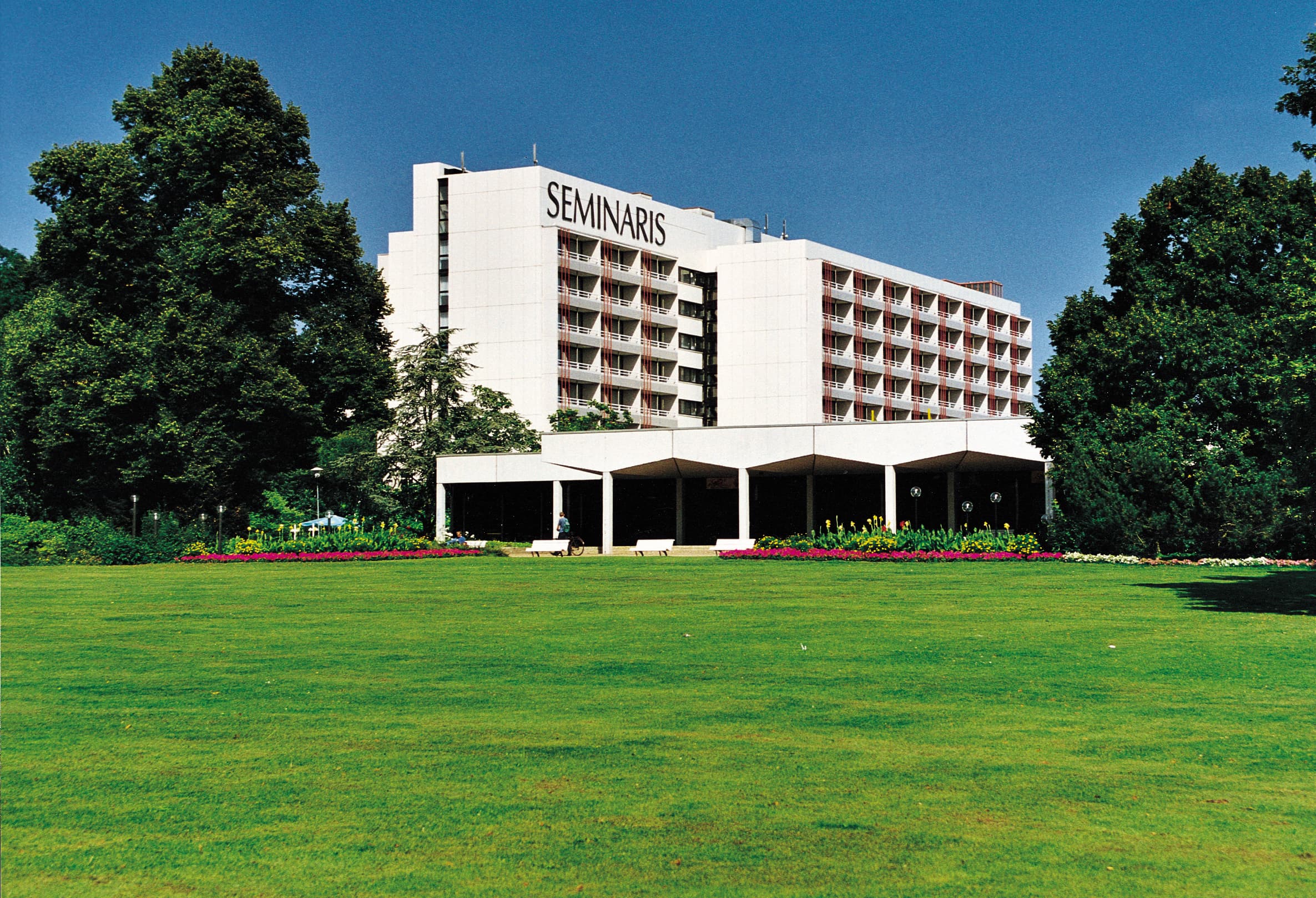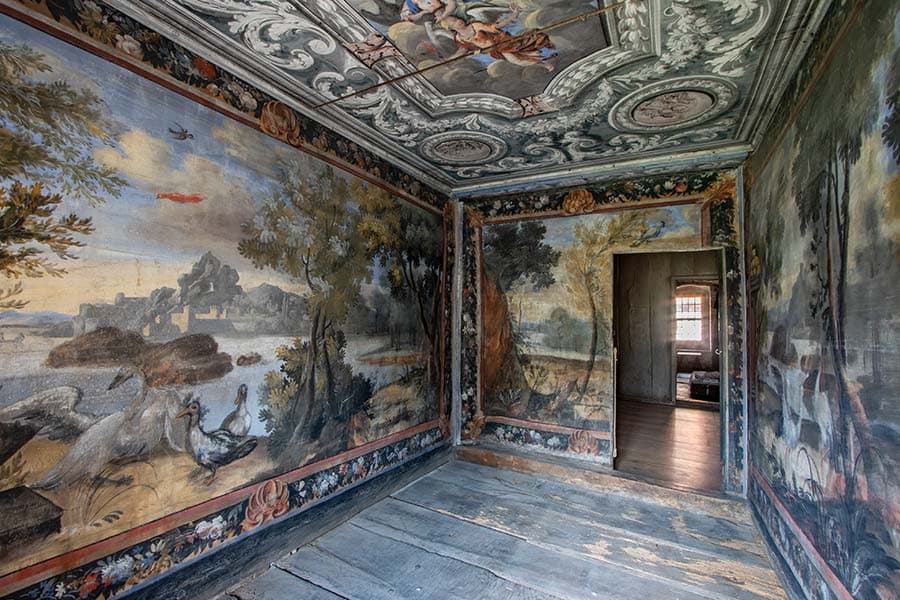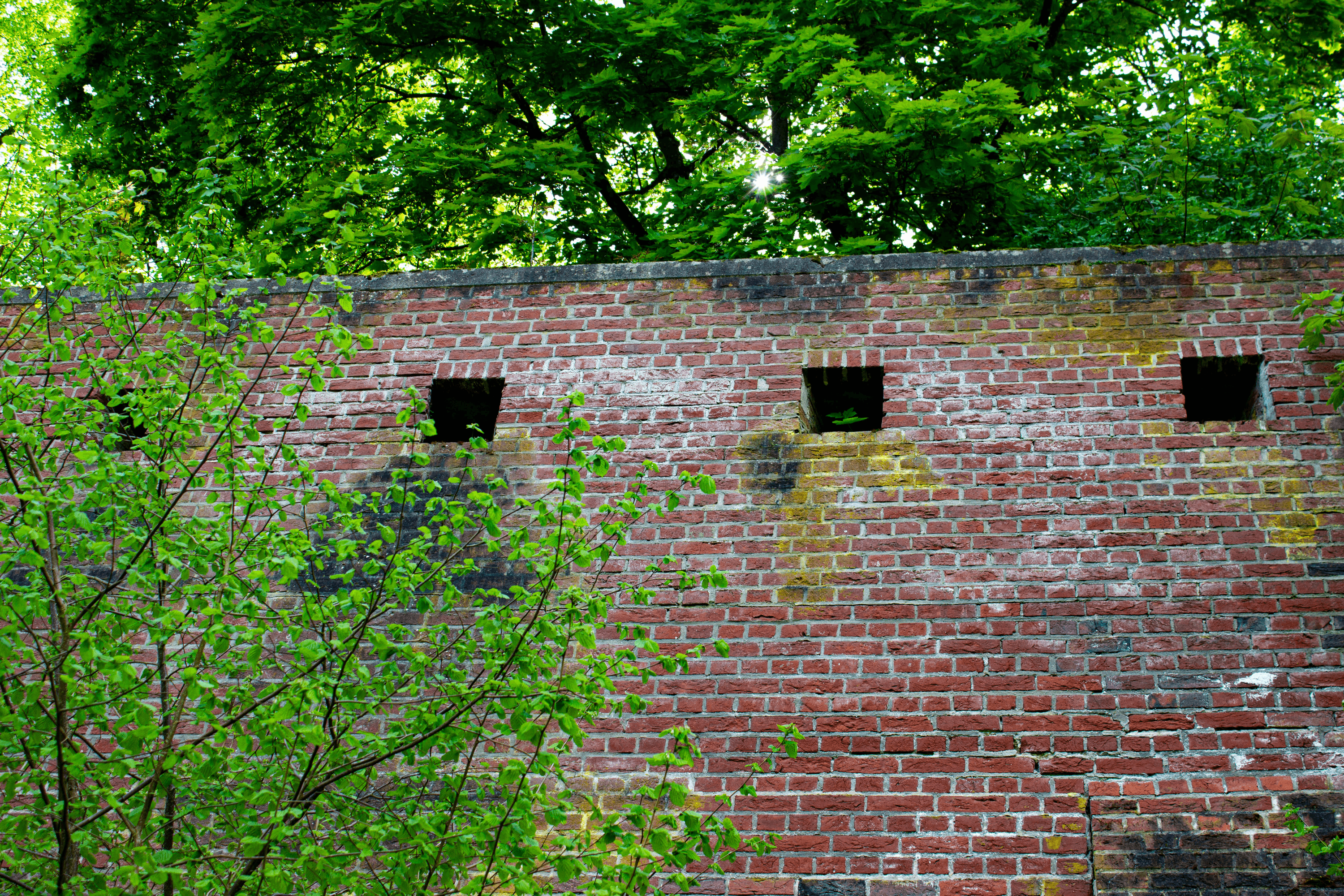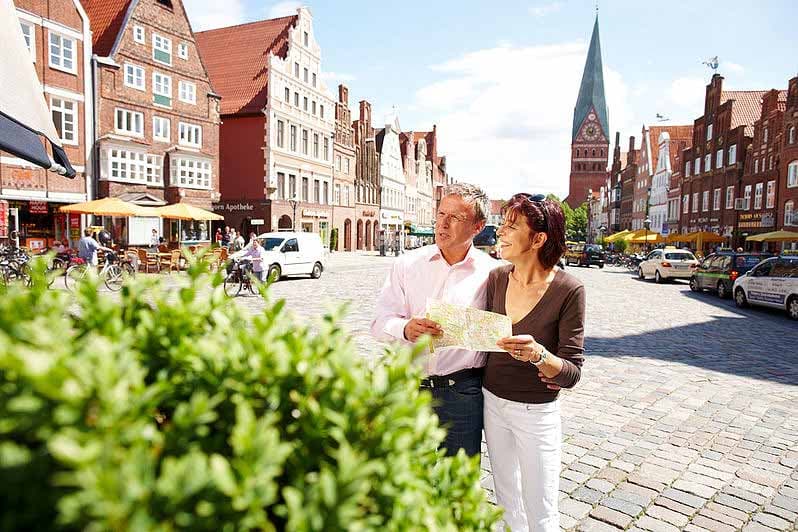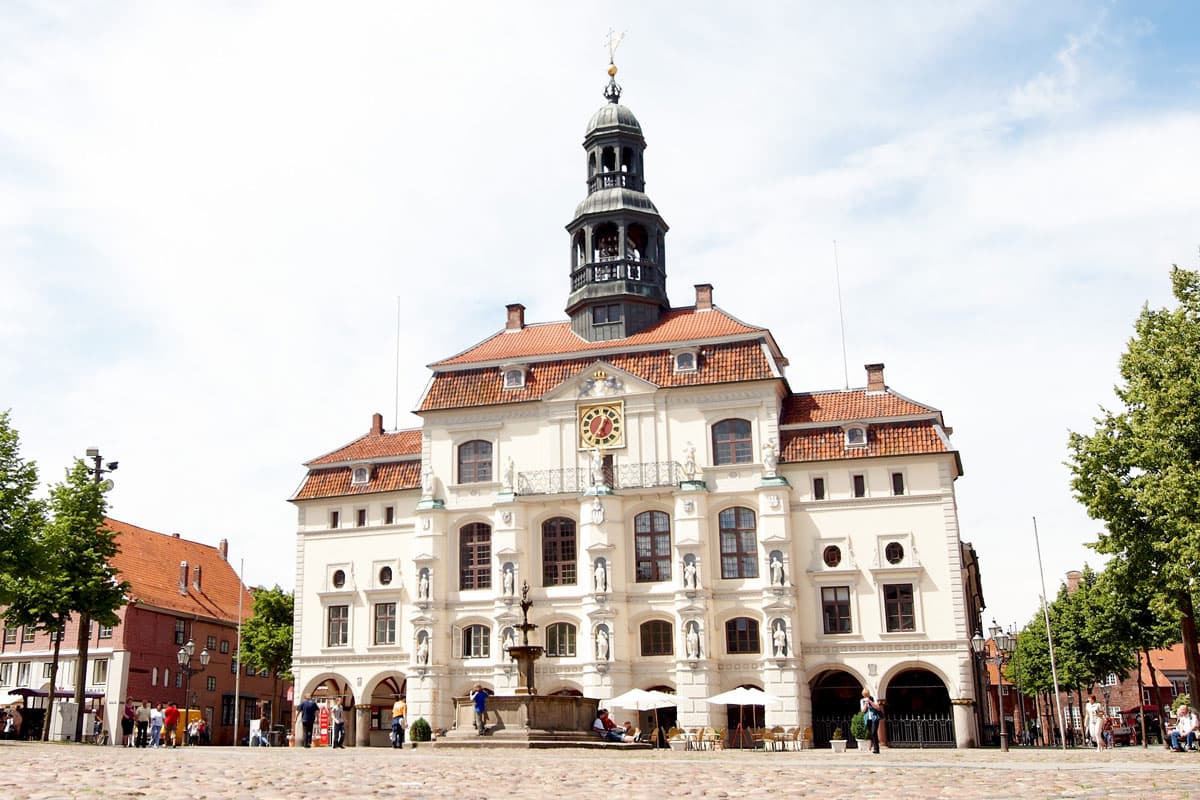
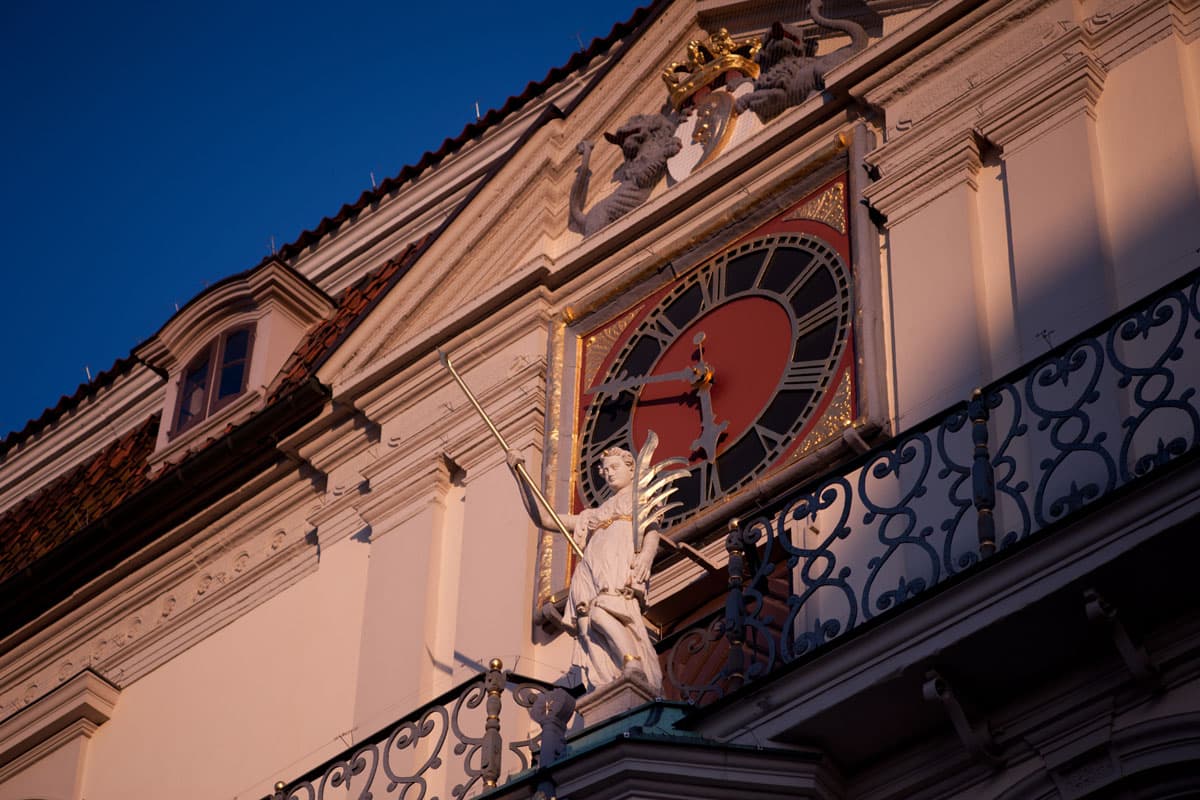
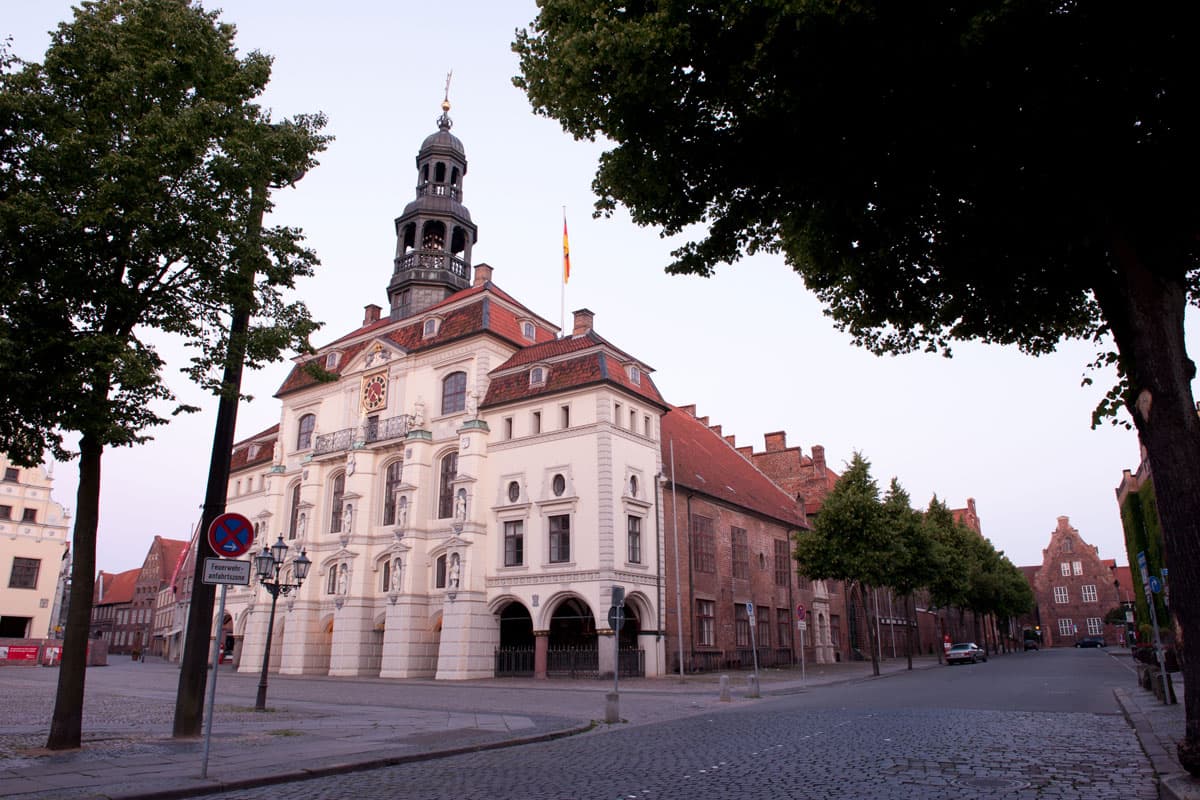
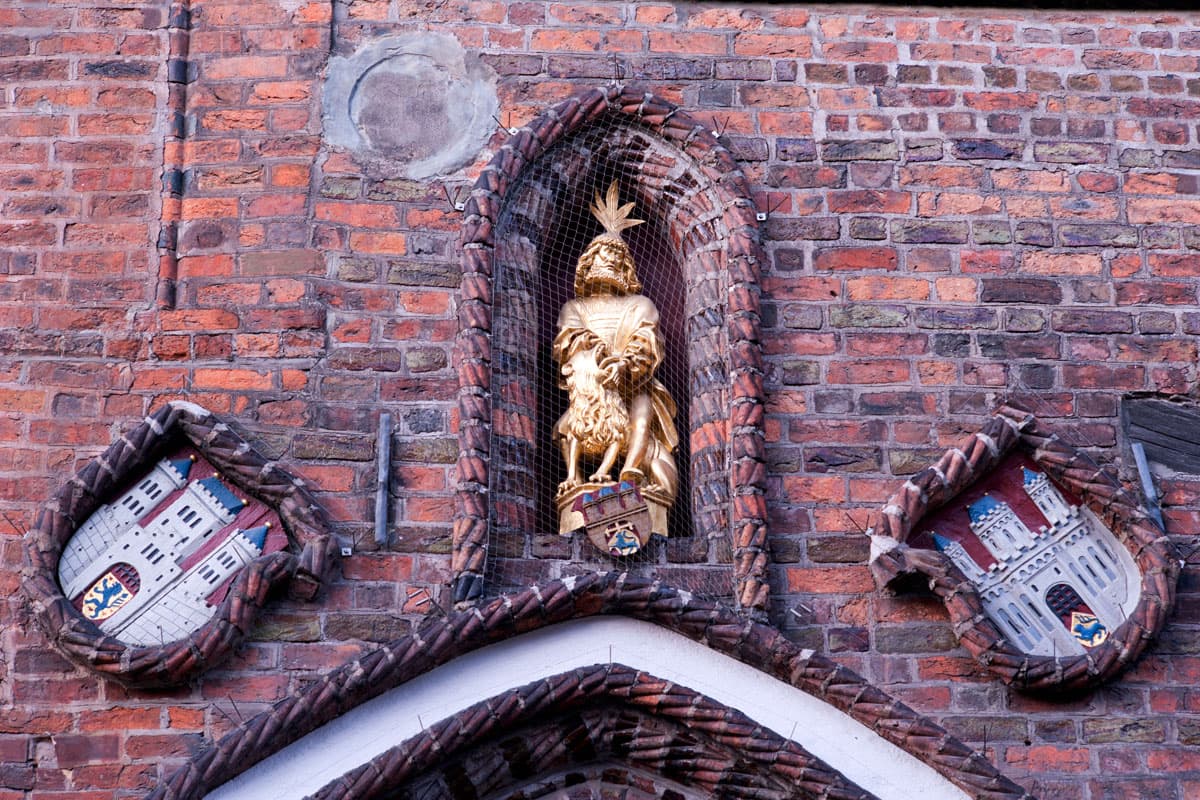
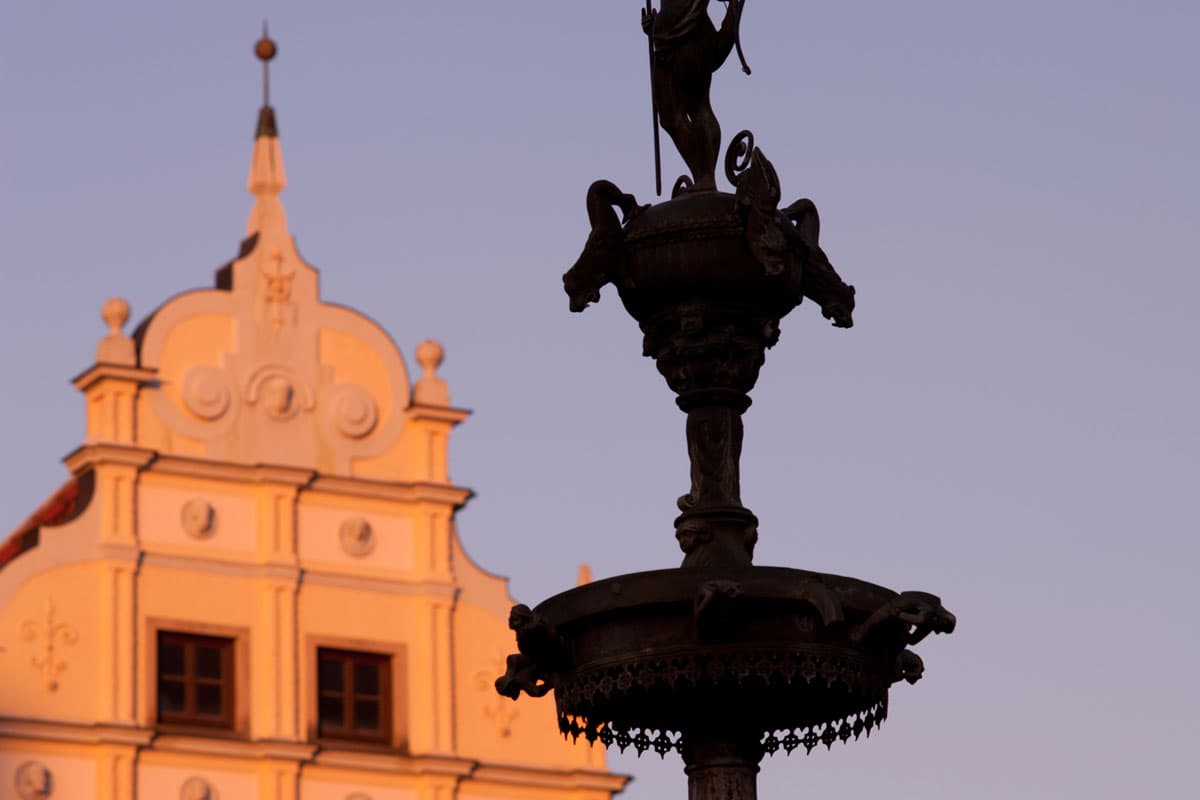
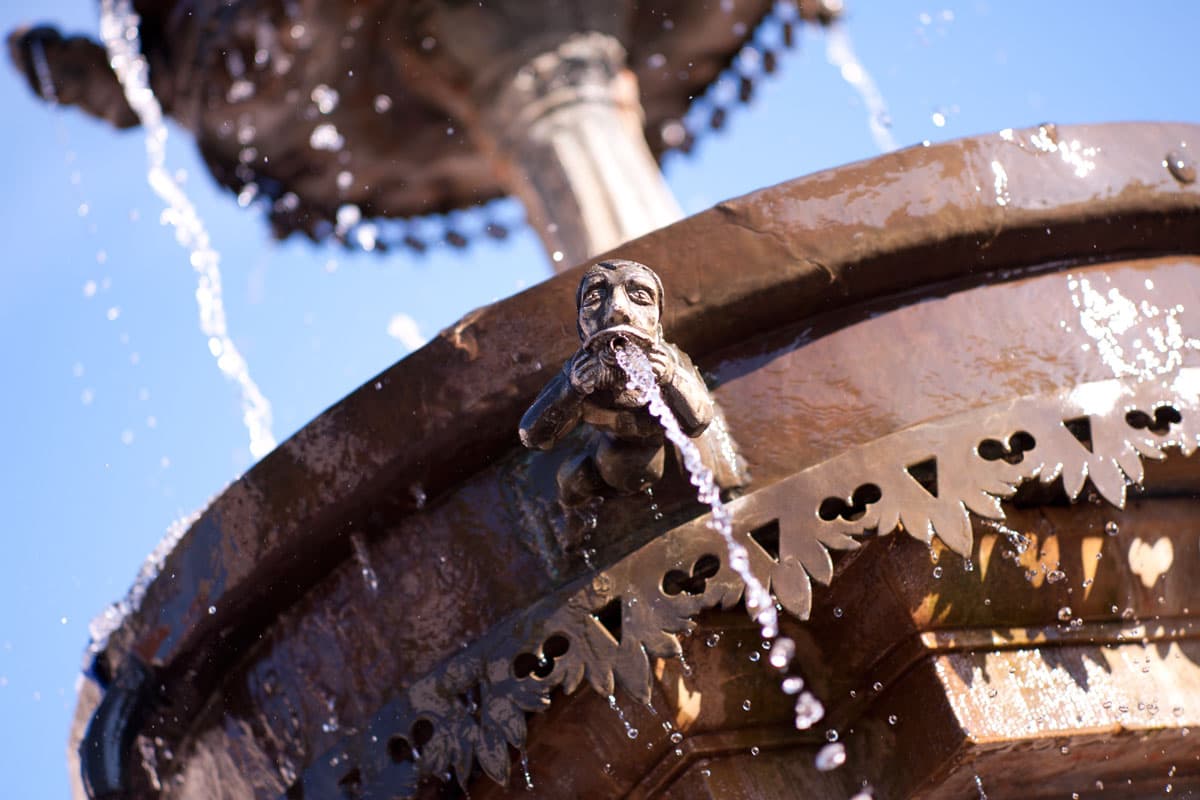
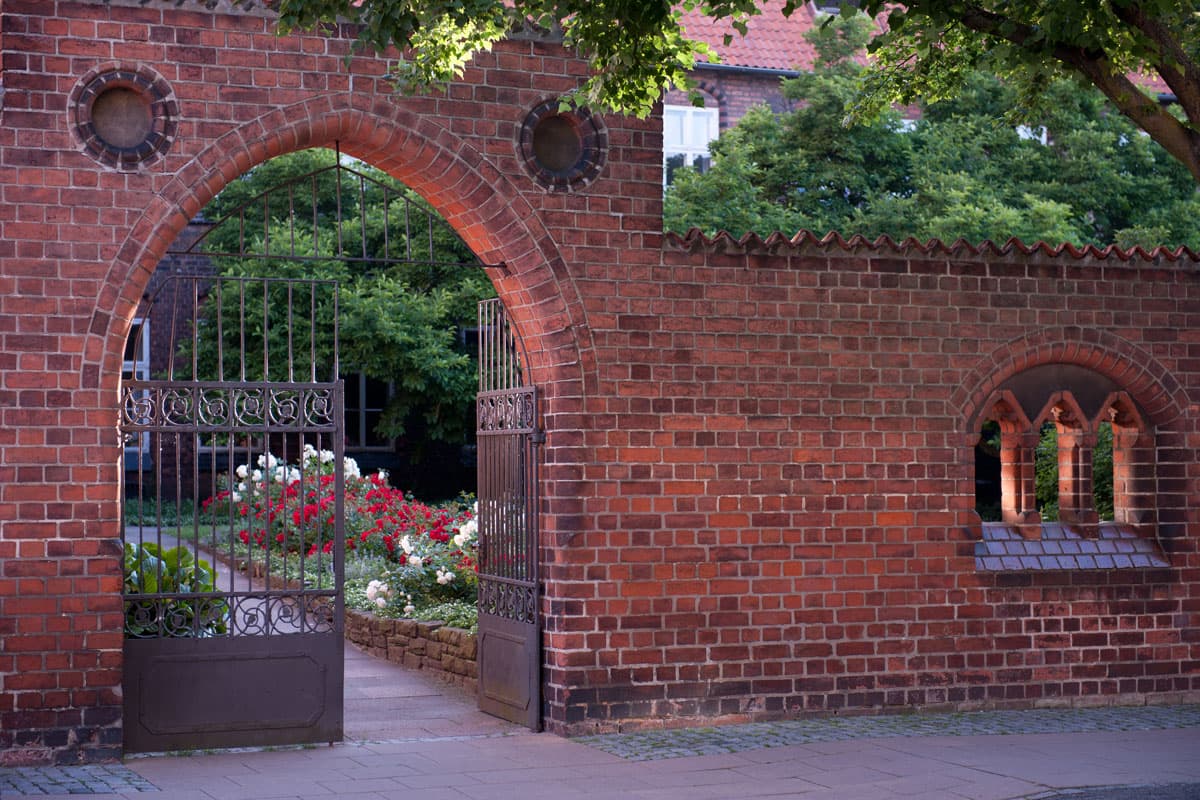
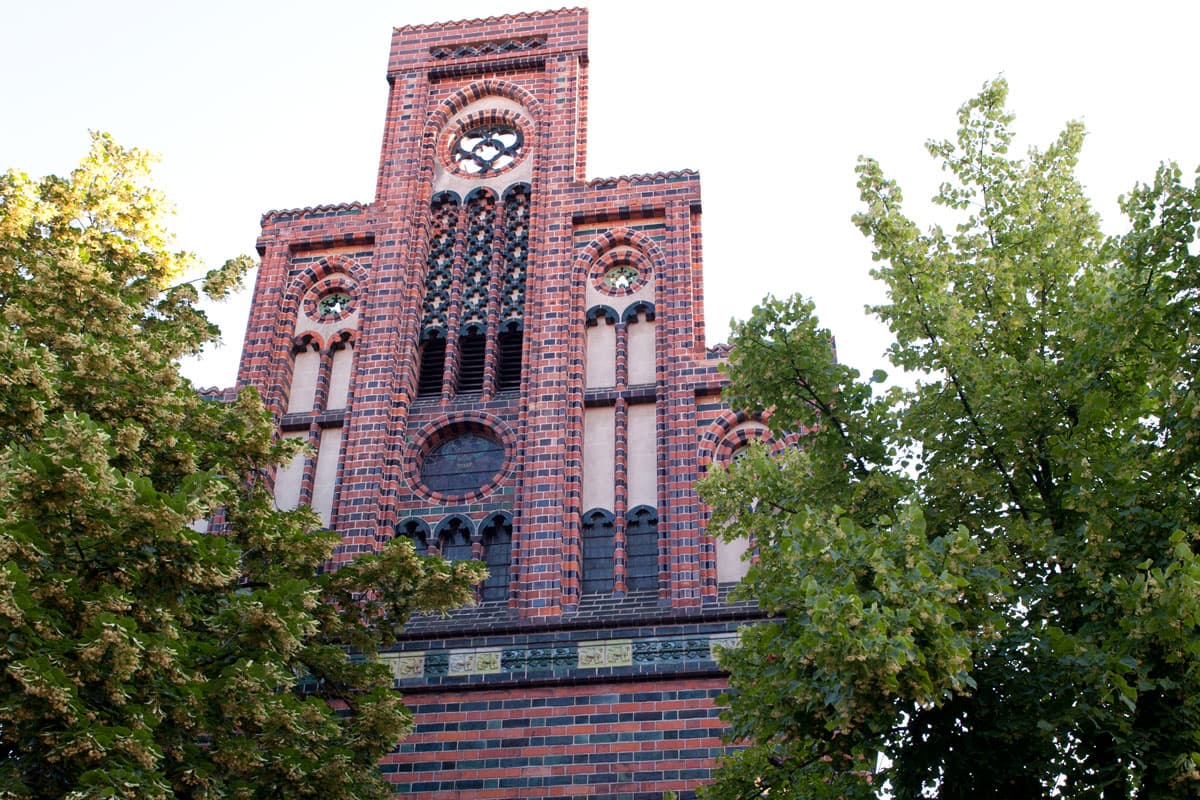
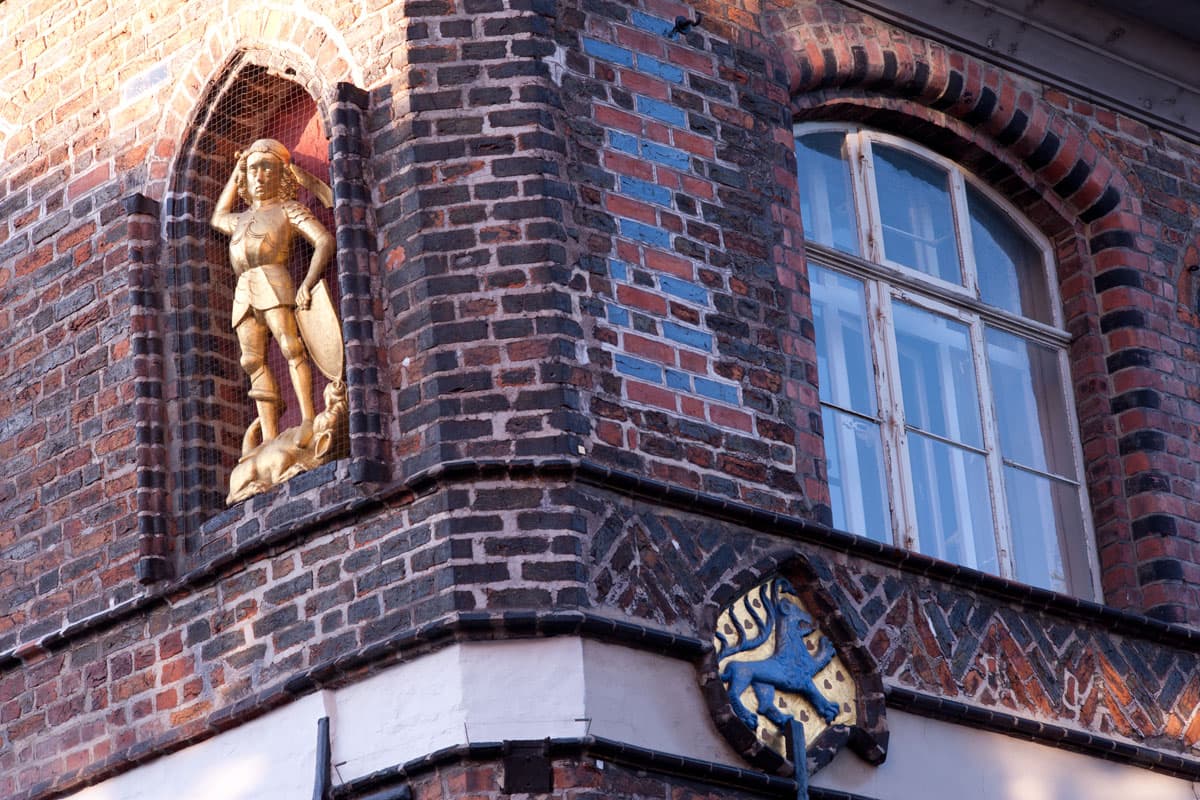
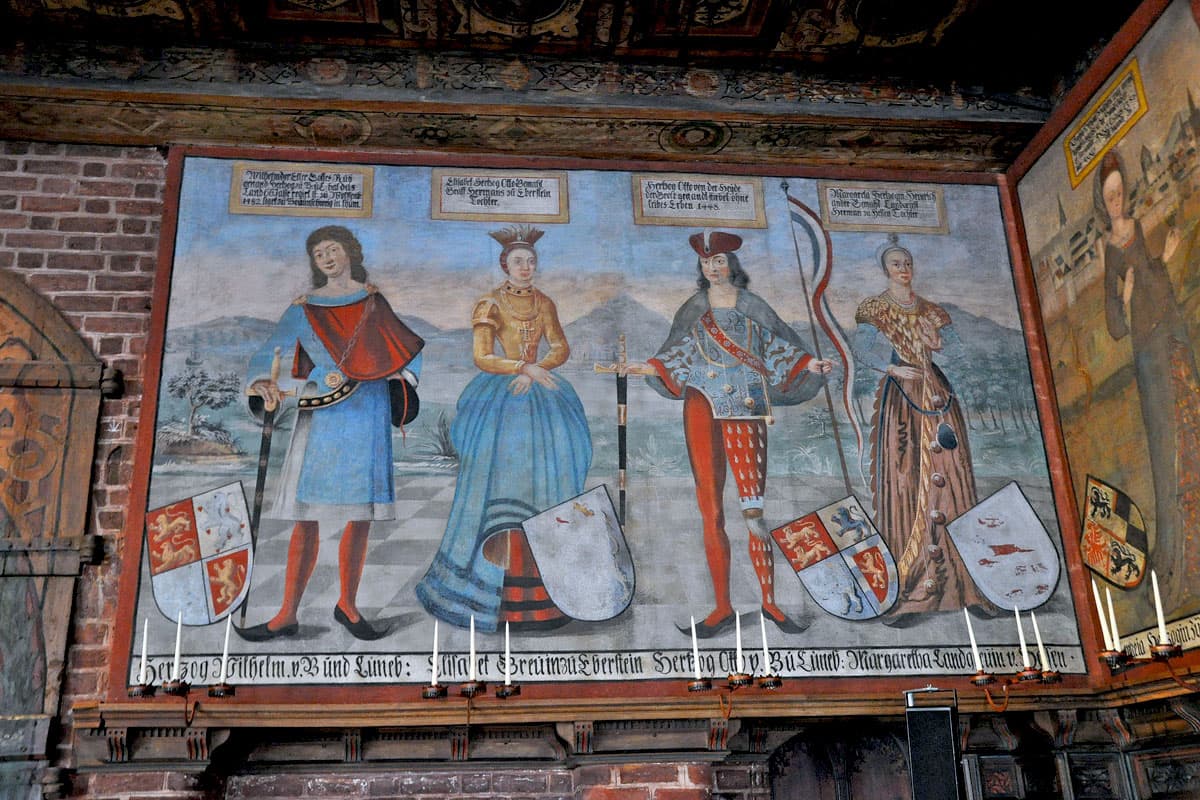
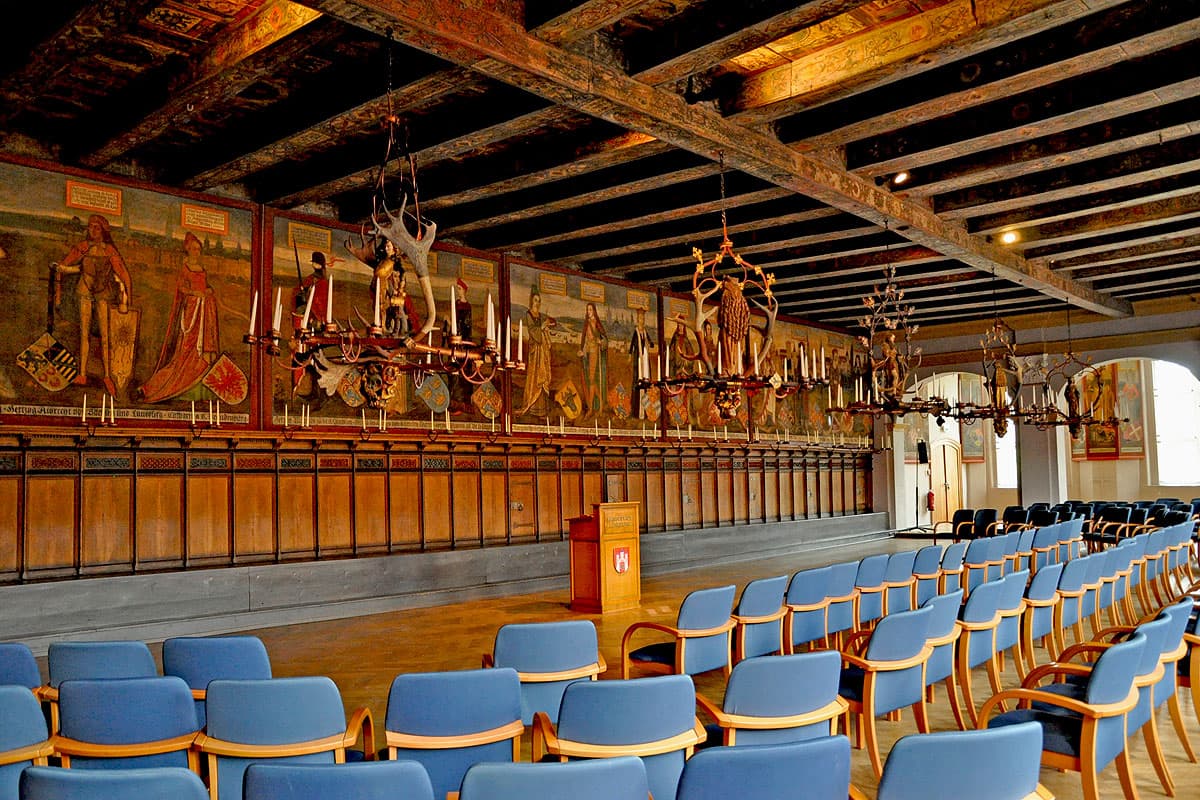
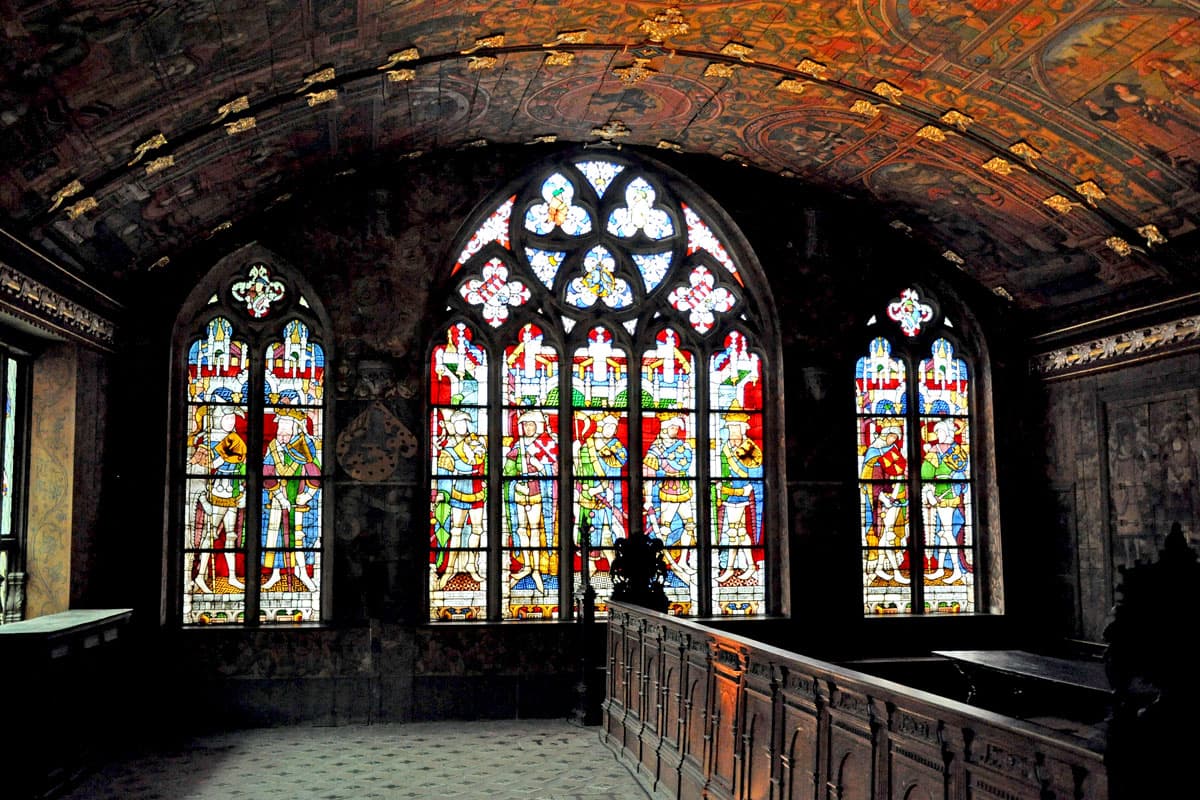
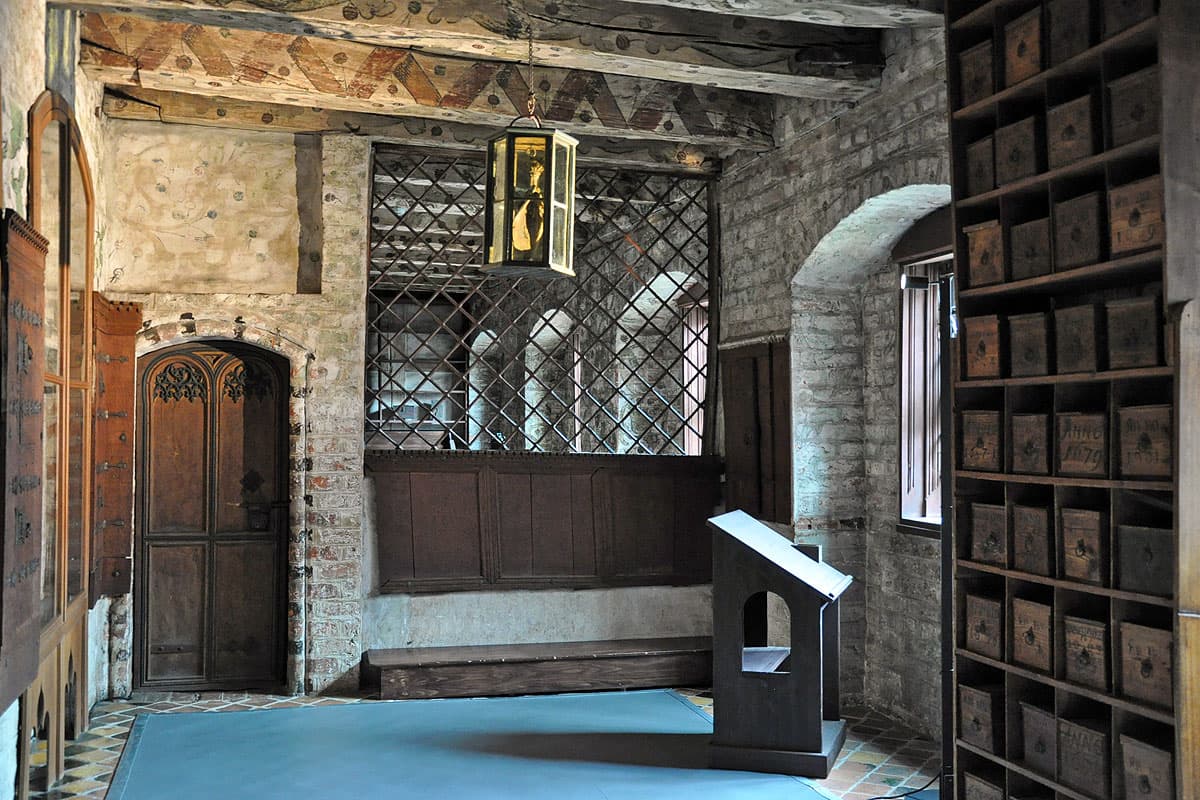
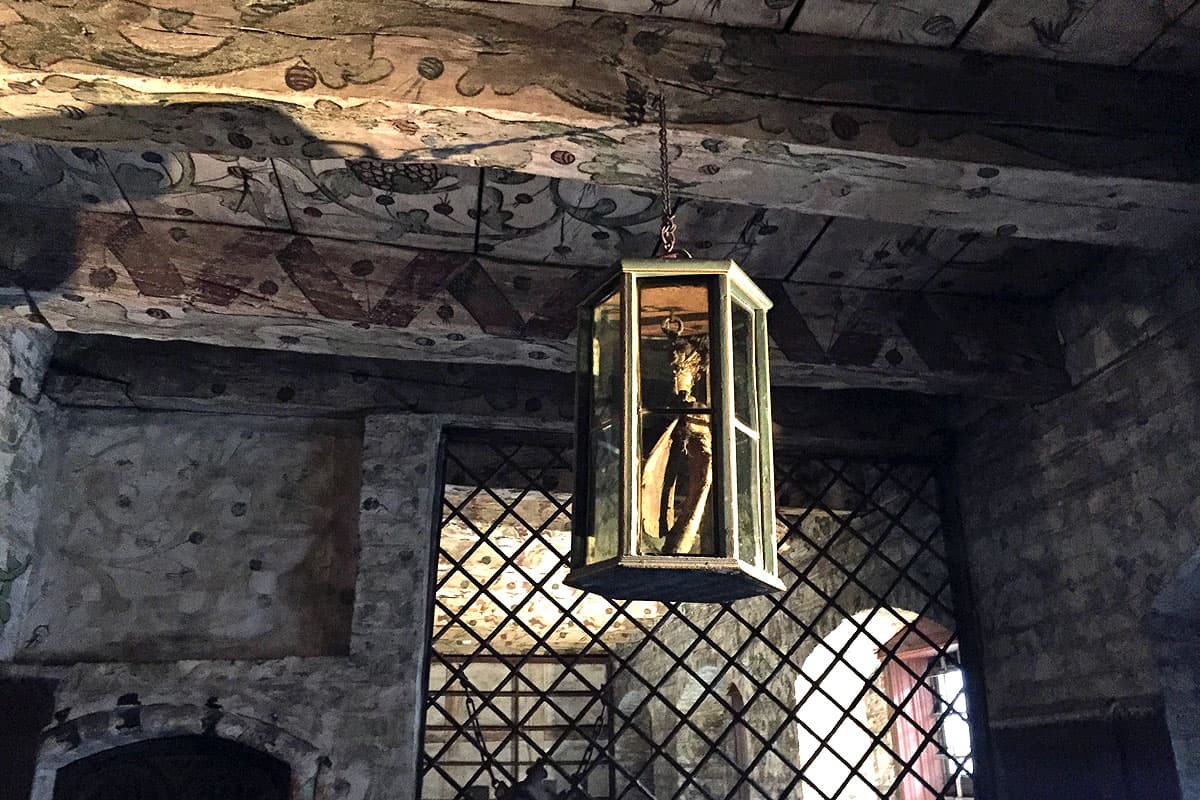
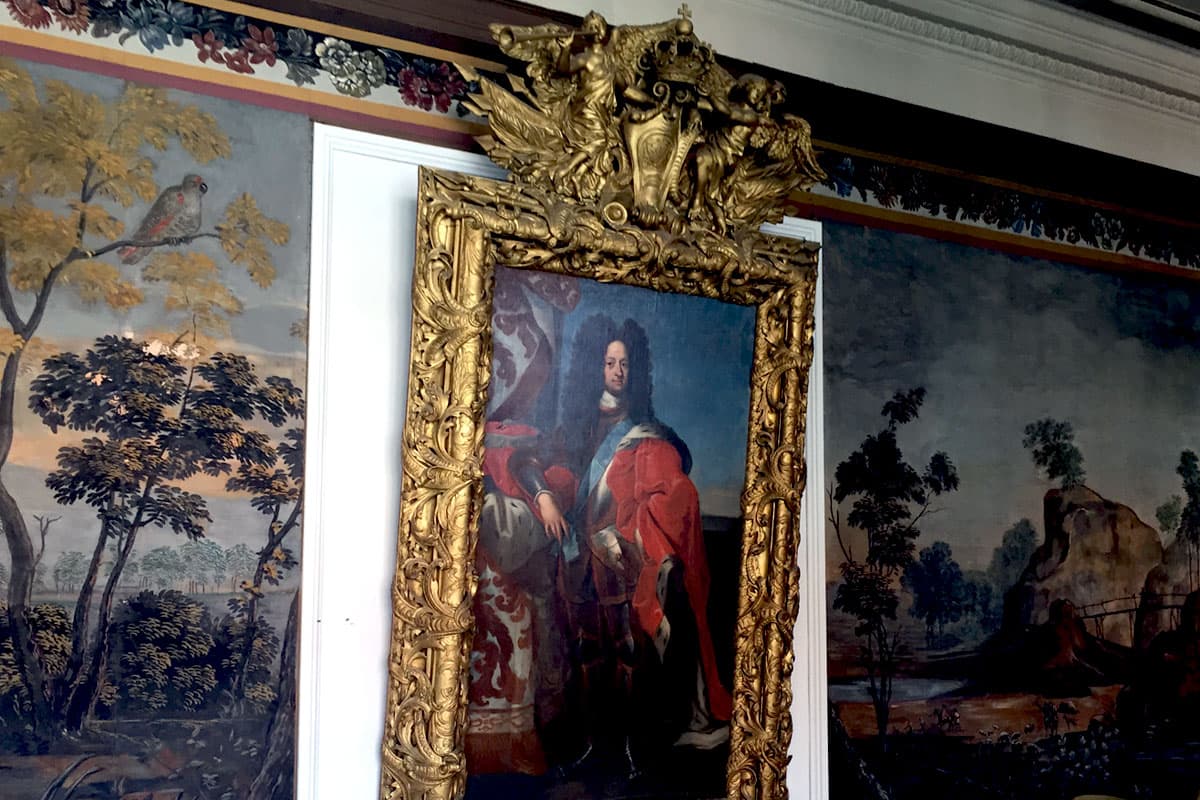
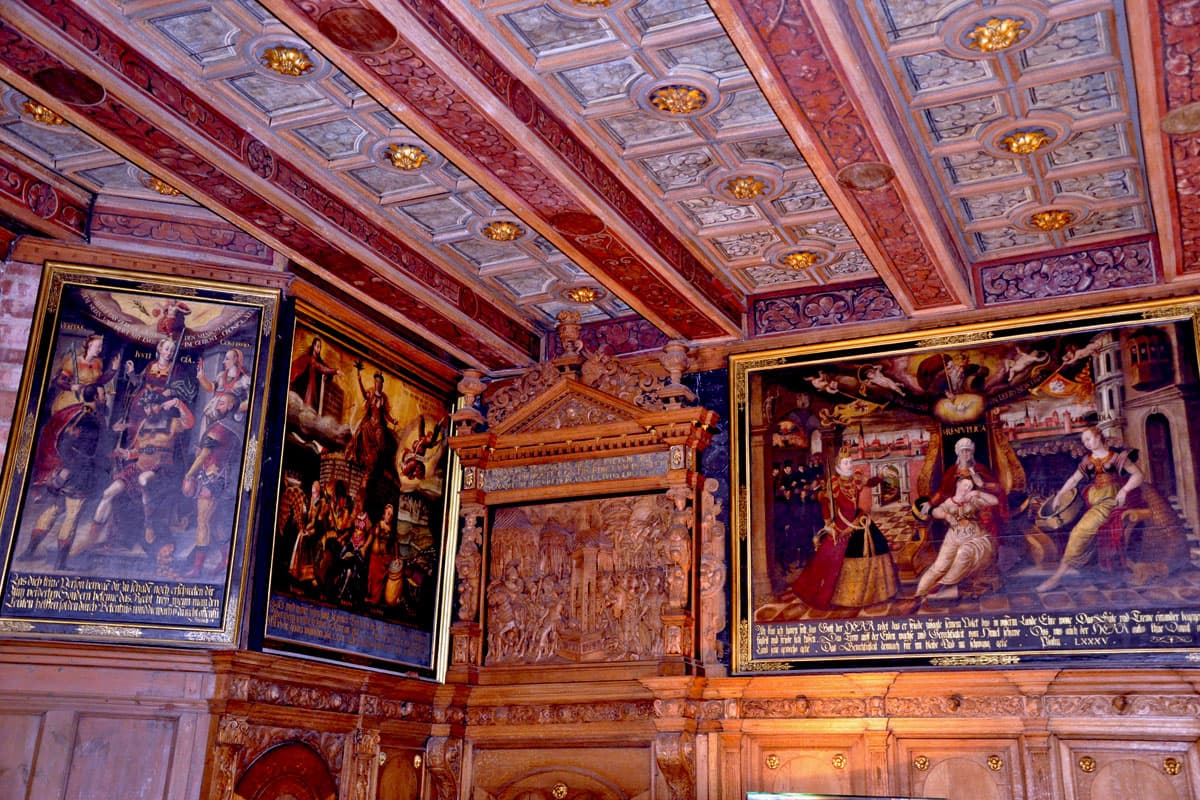
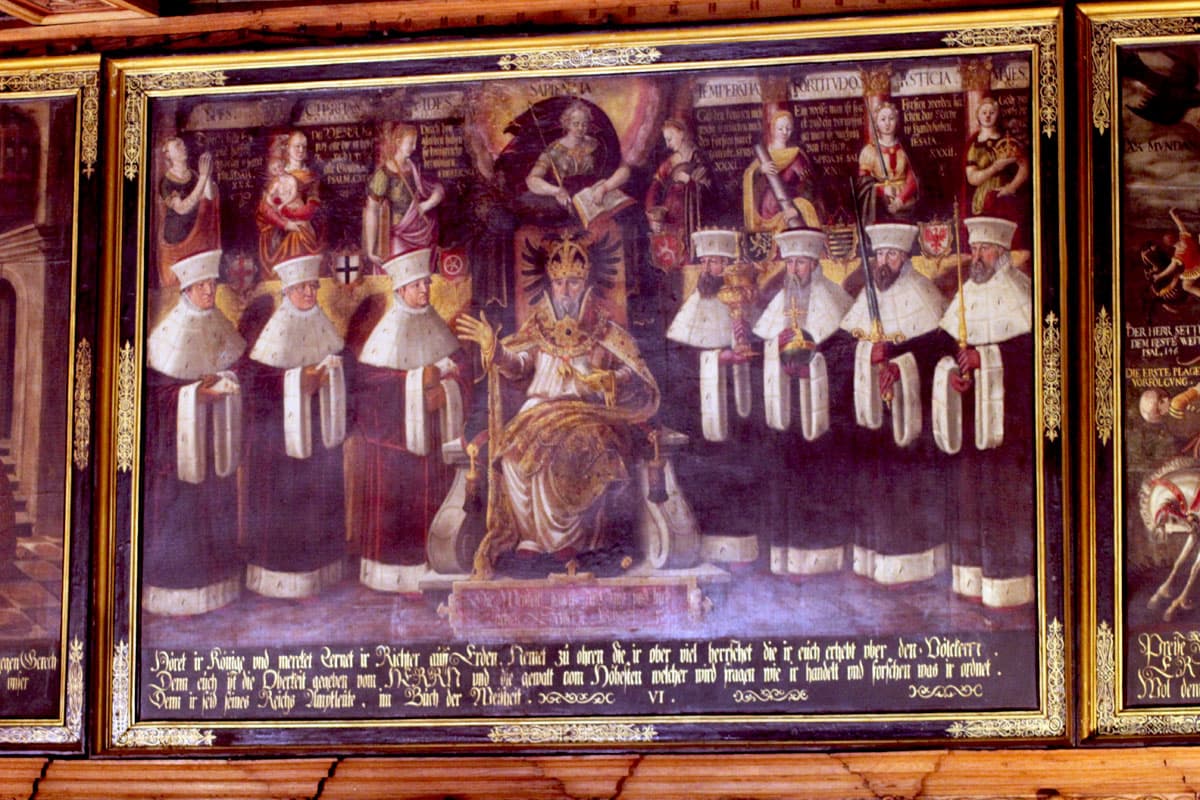
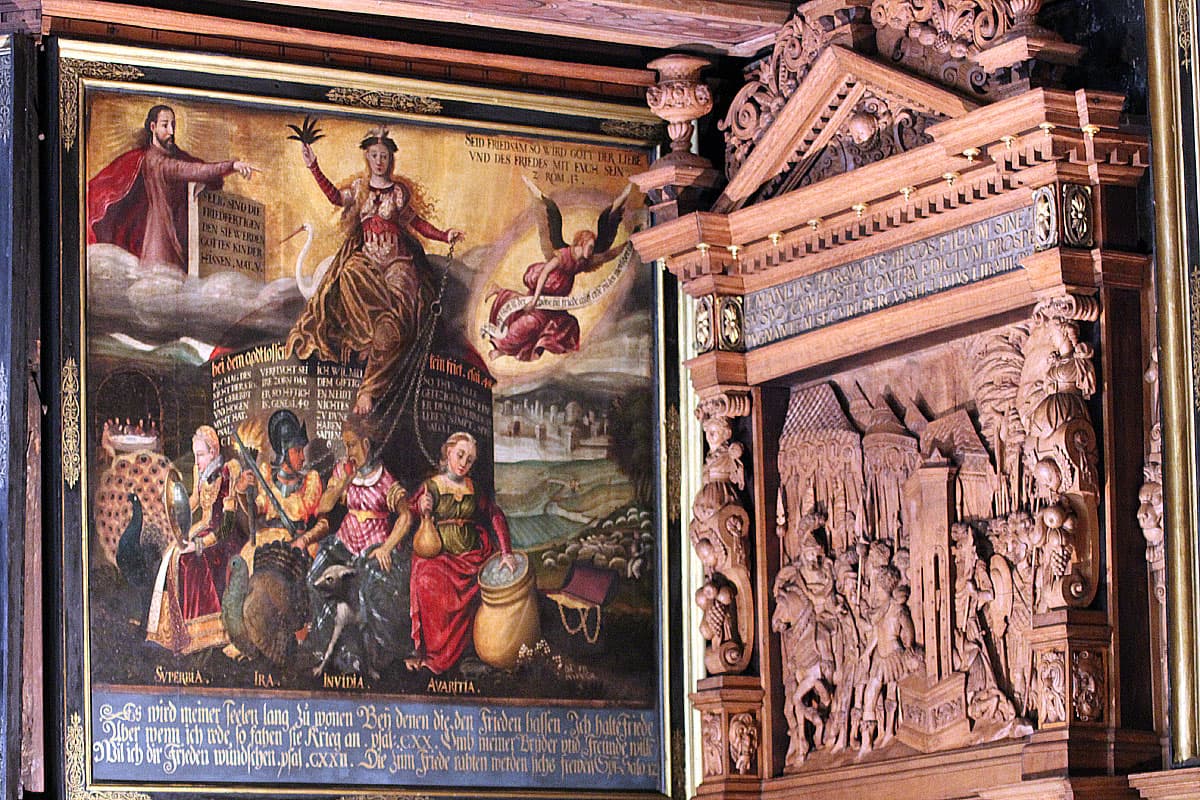
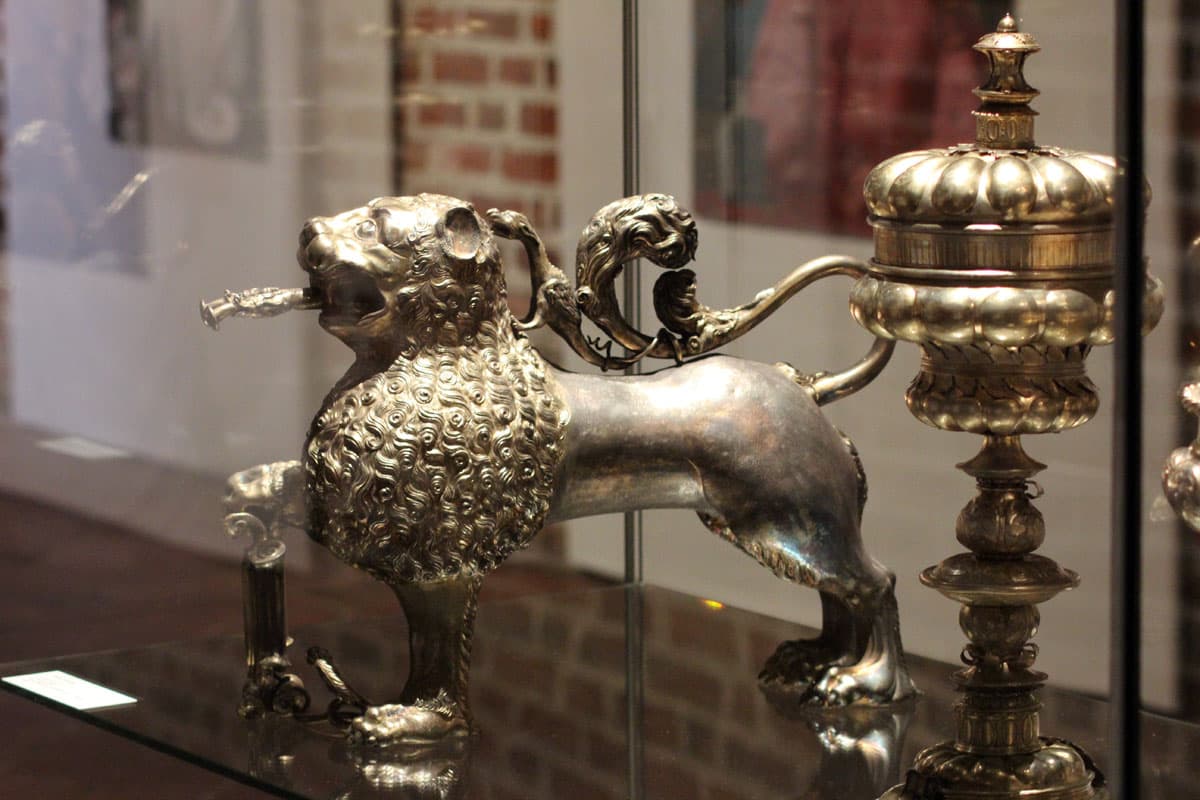
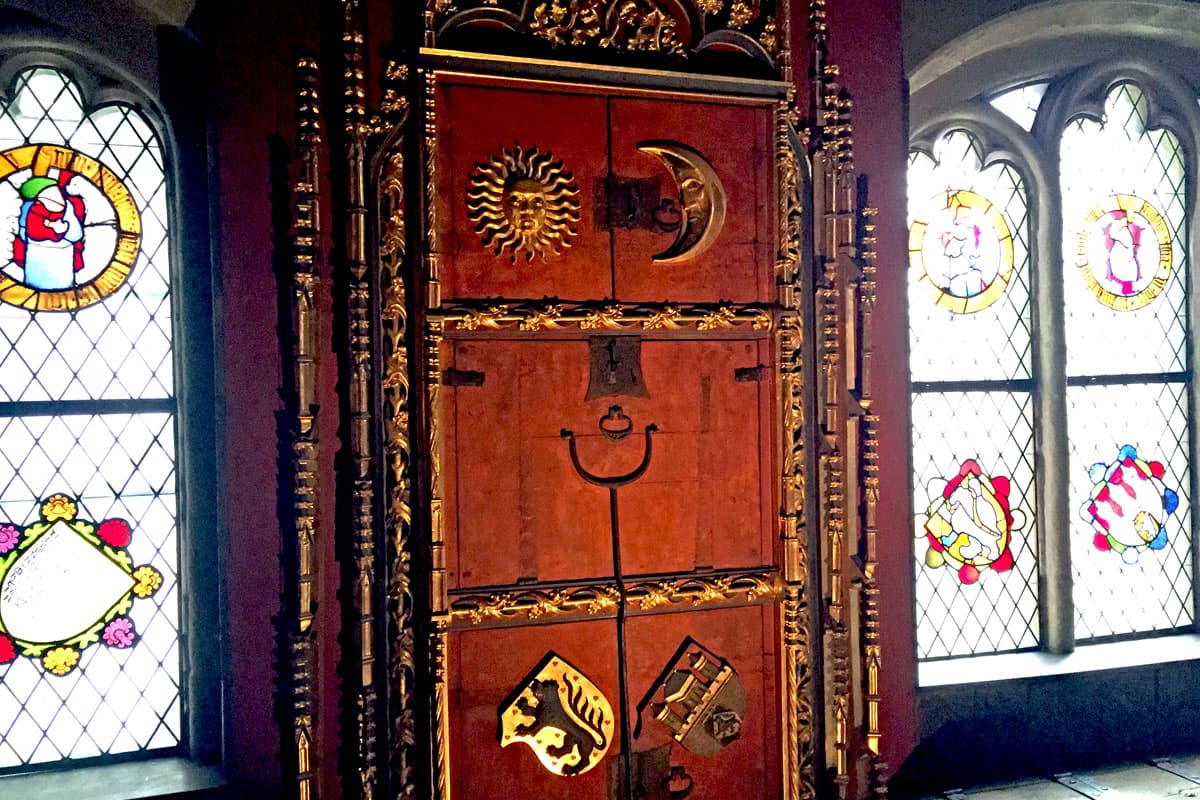
Rathaus Lüneburg
Das historische Rathaus in Lüneburg ist eine absolute Besonderheit: Es entstand im Laufe mehrerer Jahrhunderte und beherbergt Gebäude aus vielen Stilepochen. Das Grundgebäude entstand um 1230 und ist bis heute Sitz der Lüneburger Verwaltung. Das Lüneburger Rathaus ist das größte mittelalterliche Rathaus Norddeutschlands.
Betritt man das Rathaus in Lüneburg, wird man auf einen Schlag ehrfürchtig. Denn hier lebt der Geist der historischen Hansestadt weiter fort, bis heute ist das Rathaus als solches in Betrieb. Obwohl es eher aussieht, wie ein Museum und üppiger ist, als manches Schloss. In wohl keinem anderen Gebäude der Stadt zeigt sich der unermessliche Reichtum, den die Stadt Lüneburg durch das Salzmonopol gewonnen hatte, so sehr.
Reichtum der Hansestadt
Der Reichtum der Hanse in Lüneburg spiegelt sich auch im Rathaus wieder. Nur während der Führungen lassen sich die eindrucksvollen Gebäudeteile, wie Gerichtslaube, Fürstensaal, Altes Archiv, Kanzlei und große Ratsstube besichtigen, weil sie so kostbar sind. Da das Rathaus keine Kriegsschäden erlitten hatten, ist es wunderbar erhalten.
Die meisten Gebäude gehören in die Epoche der norddeutschen Backsteingotik. Nachdem jedoch die gotische Fassade zum Marktplatz durch ein Unwetter 1703 beschädigt wurde, entschied man sich, bis 1720 eine barocke Fassade davor zu stellen.
Glockenspiel aus Meißener Porzellan
Wenn sie ein Glockenspiel hören, dann kommt es aus dem Rathausturm. Hier befindet sich ein Glockenspiel aus Meißener Porzellan, das regelmäßig spielt.
Das Rathaus innen
Gerichtslaube
In der Gerichtslaube wurde nicht nur Recht gesprochen, sondern neue Bürger legten hier, im Angesicht des riesigen und sicher auch einschüchternden Gemäldes des "Jüngsten Gerichts" und vor dem versammelten Rat, ihren Bürgereid ab.
Die Gerichtslaube im Lüneburger Rathaus ist der älteste erhaltene Innenraum des Rathauses. Der Boden der Gerichtslaube ist noch im Originalzustand aus dem 14. Jahrhundert und mit Glasplatten abgedeckt. Die Decken- und Wandmalereien sind eindrucksvoll und stellen das Jüngste Gericht dar. Auch die spätgotischen Fenster sind erhalten. Im Raum befindet sich auch eine Truhe, in der das Ratssilber aufbewahrt wurde.
Eine in die Wand der Gerichtslaube eingelassene, kaum sichtbare Tür stellte damals eine Innovation dar. Es war die so genannte "Heimlichkeit", die Toilette. Innovativ war, dass sie sich im Gebäude befand, während sie in den meisten Wohnhäusern außerhalb war.
Fürstensaal
Über dem Gewandhaus und der Kanzlei bauten die Lüneburger Mitte des 15. Jahrhunderts eine weitere Etage des Rathauses. Darin befand sich ein prunkvoller Festsaal, in dem Tanzfeste des Rates stattfanden, aber auch fremde Delegationen standesgemäß begrüßt wurden.
Kam der Landesherr nach Lüneburg, wurde auch er in diesem Saal empfangen und die üppige und reiche Ausstattung machte gleich klar, wer hier das Sagen hatten. Die meisten Landesherren waren nämlich bei den reichen Lüneburgern verschuldet.
An den Wänden erkennt man viele Gemälde fürstlicher Paare aus dem Hause Braunschweig-Lüneburg. Die Decke ist mit Portraits deutscher und römischer Kaiser bemalt. Auf dem Unterzug befinden sich die Namen und Wappen der Lüneburger Ratsmitglieder des Jahres 1607.
Der Fürstensaal ist einer der größten säulenfreien Säle seiner Zeit und damit ein echtes Kunstwerk. Heute wird er für Konzerte und Empfänge genutzt.
Huldigungssaal
Als sich Georg Ludwig I., späterer König Georg I. von England, auf der Durchreise nach London zu einem Besuch ankündigte, brach in Lüneburg Hektik aus. Der edle Fürstensaal wurde nämlich gerade renoviert und man musste nun schnellstens ein dem König angemessenen Saal zur Huldigung schaffen.
In aller Eile baute man ein Obergeschoss aus zum Huldigungssaal, der noch heute unverändert erhalten ist. Die Wände zeigen Fantasiemalereien und gegenüber der Fensterfront hängt ein großes Bild von Georg Ludwig I. Die Mühen wurden nicht belohnt, nach dieser Huldigung kam König Georg I. nie wieder nach Lüneburg.
In der Folgezeit tagte der Lüneburger Rat im Huldigungssaal und das ist bis heute so geblieben. Alle wichtigen Entscheidung der Stadt werden seit 1706 in diesem Saal getroffen.
Große Ratsstube
Der Rat ließ einen sehr repräsentativen und reich ausgestatteten Raum schaffen, der als Meisterwerk der Renaissance-Kunst gilt. Zahlreiche Türen, Fenster und Stühle sind mit Schnitzereien verziert. Die Bilder sind bestimmt durch Themen, wie Gerechtigkeit und sollten die Ratsmitglieder zu gerechtem Handeln anleiten. Der Saal konnte mit nur einem großen Ofen gut beheizt werden, was ihn zu einem beliebten Ort machte.
Kanzlei mit Schweineknochen an der Decke
In der alten Kanzlei arbeiteten die Juristen des Rates mit ihren Schreibern. Damit die Finger im Winter nicht kalt wurden, gab es einen Kamin, was nicht selbstverständlich war. Ein Fenster nach Süden sorgte für Licht. Der Raum ist durch ein geschmiedetes Eisengitter getrennt. Die Tonfliesen auf dem Boden sind bis heute im Original erhalten.
Im vorderen Raum hängt von der Decke eine Laterne mit einem Schweineknochen. Der Sage nach handelt es sich um den Knochen der Sau, die in Lüneburg das Salz gefunden und die Hansestadt damit reich gemacht haben soll.
Die Sülfmeister bestimmten die Geschicke
Lüneburgs 54 Salz-Siedehütten gehörten Klöstern, Adeligen und dem Landesherren, die die einzelnen Siedepfannen an ehrbare Bürger Lüneburgs verpachteten. Nur diese Sülfmeister konnten zum Ratsmitglied des Stadtrates ernannt werden. So bestimmten ca. 40 Familien jahrhundertelang die Geschicke der Stadt.
Einer dieser Sülfmeister wurde für ein Jahr zur Oberaufsicht der gesamten Saline gewählt und hatte sein Büro damit im Rathaus. Er kontrollierte die Finanzen und vertrat die Interessen aller Sülfmeister gegen über den Verpächtern. Denn durch die Saline wurde Lüneburg reich und Geld war Macht in dieser Zeit.
Die Macht der Lüneburger war so groß, dass sogar das herzogliche Schloss auf der Schattenseite des Rathauses liegt. Dies war zur damaligen Zeit ein Affront, musste aber vom Herzog geduldet werden, weil die Lüneburger so mächtig waren und er bei ihnen verschuldet war.
Auch die Kirche war in dieser Zeit anders organisiert. Der Rat finanzierte Geistliche und den Unterhalt der Kirchen. Und wer bezahlt, der bestimmt. Also ernannte der Rat der Stadt Lüneburg auch die Pastoren und den Superintendenten.
Das Rathaus Lüneburg ist nur im Rahmen einer Rathausführung zu besichtigen. Informationen und Tickets dazu erhalten Sie in der Lüneburger Tourist Information.

